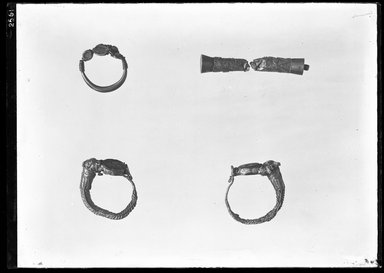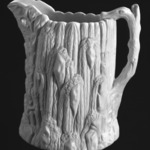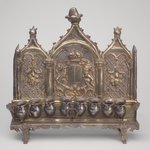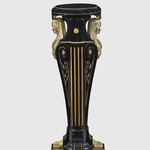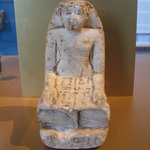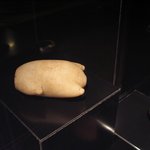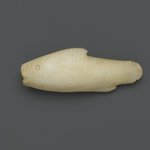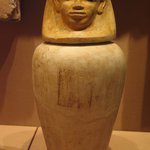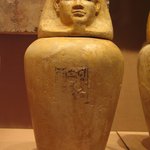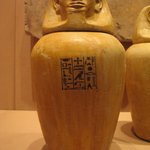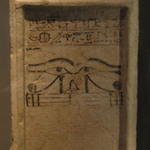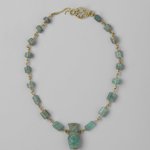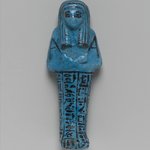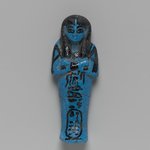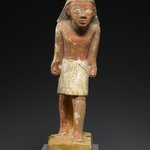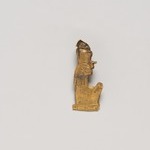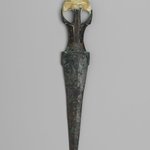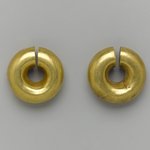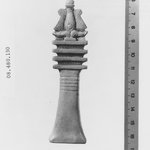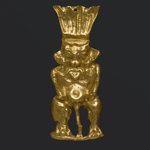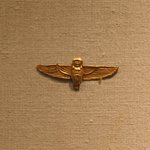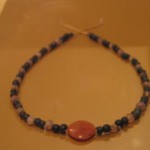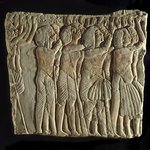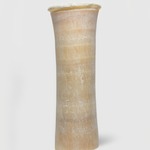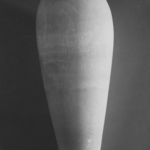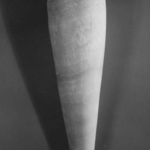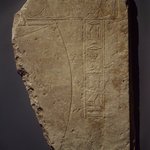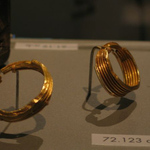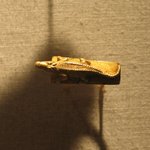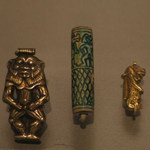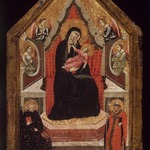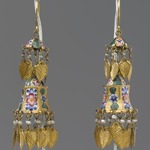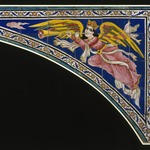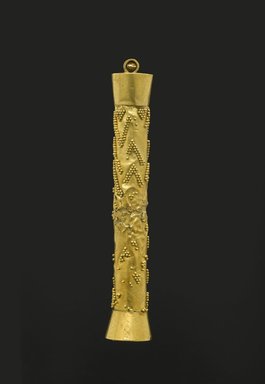

Hollow Cylindrical Amulet, ca. 1938–1759 B.C.E. Gold, 1 7/8 in. (4.8 cm) high x 5/16 in. (0.8 cm) diameter. Brooklyn Museum, Charles Edwin Wilbour Fund, 37.701E. Creative Commons-BY (Photo: Brooklyn Museum, 37.701E_PS2.jpg)
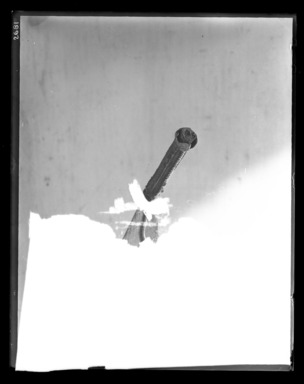
Hollow Cylindrical Amulet, ca. 1938–1759 B.C.E. Gold, 1 7/8 in. (4.8 cm) high x 5/16 in. (0.8 cm) diameter. Brooklyn Museum, Charles Edwin Wilbour Fund, 37.701E. Creative Commons-BY (Photo: , 37.701E_NegE_SL4.jpg)
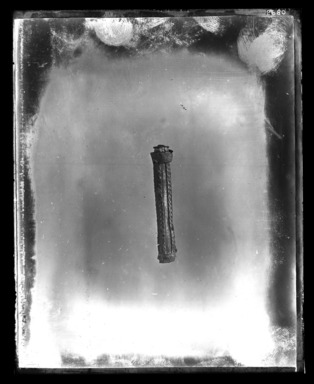
Hollow Cylindrical Amulet, ca. 1938–1759 B.C.E. Gold, 1 7/8 in. (4.8 cm) high x 5/16 in. (0.8 cm) diameter. Brooklyn Museum, Charles Edwin Wilbour Fund, 37.701E. Creative Commons-BY (Photo: , 37.701E_NegD_SL4.jpg)
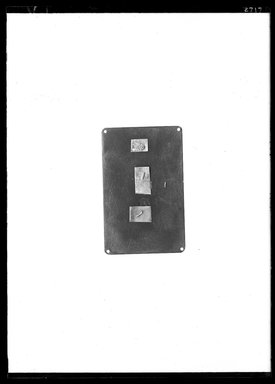
Hollow Cylindrical Amulet, ca. 1938–1759 B.C.E. Gold, 1 7/8 in. (4.8 cm) high x 5/16 in. (0.8 cm) diameter. Brooklyn Museum, Charles Edwin Wilbour Fund, 37.701E. Creative Commons-BY (Photo: Brooklyn Museum, 37.701E_NegA_SL4.jpg)
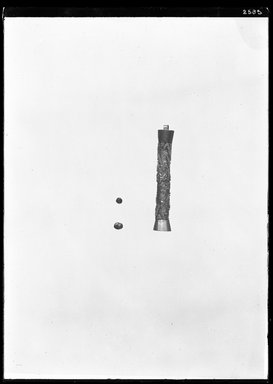
Hollow Cylindrical Amulet, ca. 1938–1759 B.C.E. Gold, 1 7/8 in. (4.8 cm) high x 5/16 in. (0.8 cm) diameter. Brooklyn Museum, Charles Edwin Wilbour Fund, 37.701E. Creative Commons-BY (Photo: Brooklyn Museum, 37.701E_NegB_SL4.jpg)
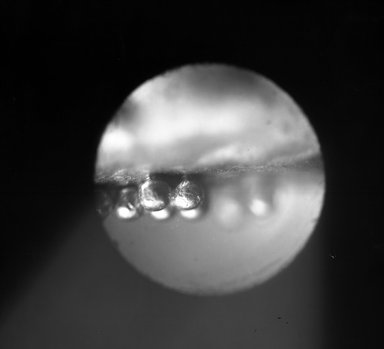
Hollow Cylindrical Amulet, ca. 1938–1759 B.C.E. Gold, 1 7/8 in. (4.8 cm) high x 5/16 in. (0.8 cm) diameter. Brooklyn Museum, Charles Edwin Wilbour Fund, 37.701E. Creative Commons-BY (Photo: Brooklyn Museum, 37.701E_NegI_glass_bw_SL4.jpg)
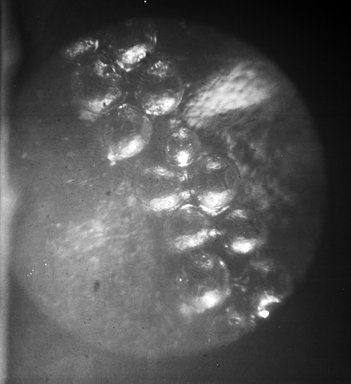
Hollow Cylindrical Amulet, ca. 1938–1759 B.C.E. Gold, 1 7/8 in. (4.8 cm) high x 5/16 in. (0.8 cm) diameter. Brooklyn Museum, Charles Edwin Wilbour Fund, 37.701E. Creative Commons-BY (Photo: Brooklyn Museum, 37.701E_NegL_glass_bw_SL4.jpg)
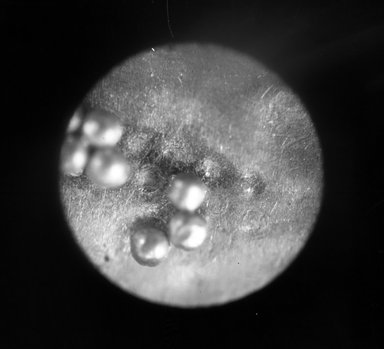
Hollow Cylindrical Amulet, ca. 1938–1759 B.C.E. Gold, 1 7/8 in. (4.8 cm) high x 5/16 in. (0.8 cm) diameter. Brooklyn Museum, Charles Edwin Wilbour Fund, 37.701E. Creative Commons-BY (Photo: Brooklyn Museum, 37.701E_NegH_glass_bw_SL4.jpg)

Hollow Cylindrical Amulet, ca. 1938–1759 B.C.E. Gold, 1 7/8 in. (4.8 cm) high x 5/16 in. (0.8 cm) diameter. Brooklyn Museum, Charles Edwin Wilbour Fund, 37.701E. Creative Commons-BY (Photo: Brooklyn Museum, 37.701E_NegK_glass_bw_SL4.jpg)
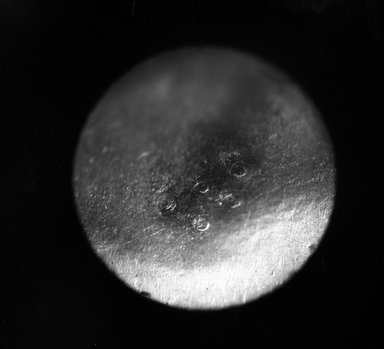
Hollow Cylindrical Amulet, ca. 1938–1759 B.C.E. Gold, 1 7/8 in. (4.8 cm) high x 5/16 in. (0.8 cm) diameter. Brooklyn Museum, Charles Edwin Wilbour Fund, 37.701E. Creative Commons-BY (Photo: Brooklyn Museum, 37.701E_NegJ_glass_bw_SL4.jpg)
Hollow Cylindrical Amulet
Egyptian, Classical, Ancient Near Eastern Art


